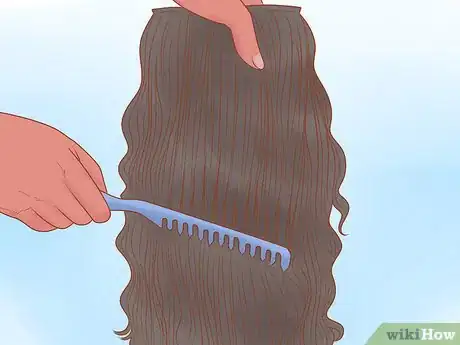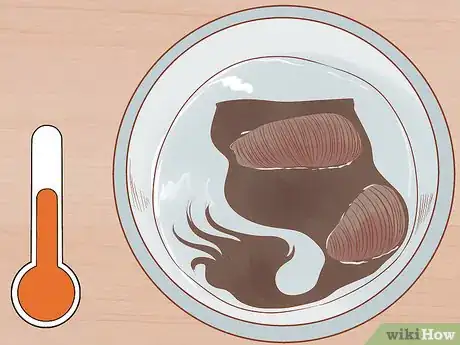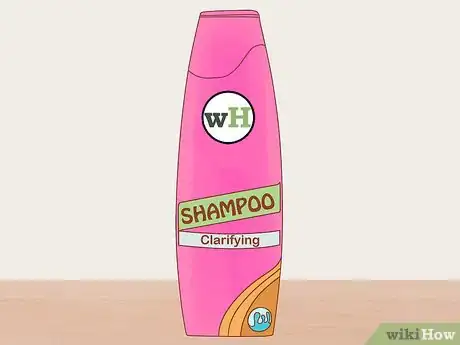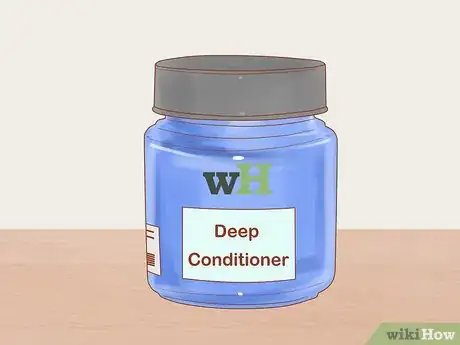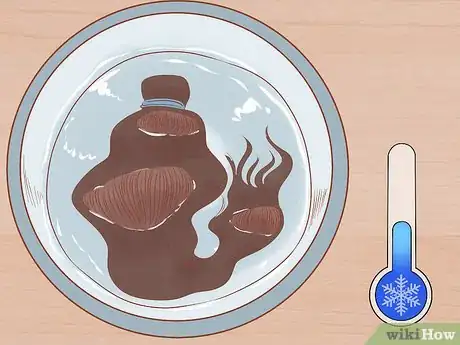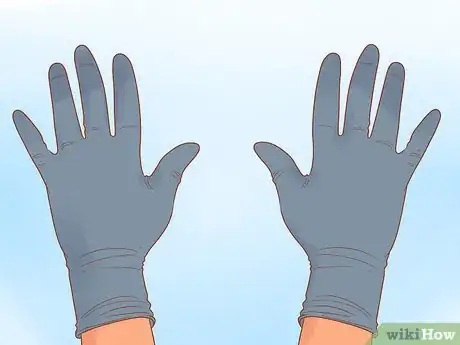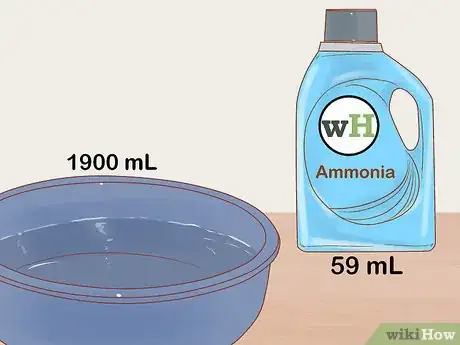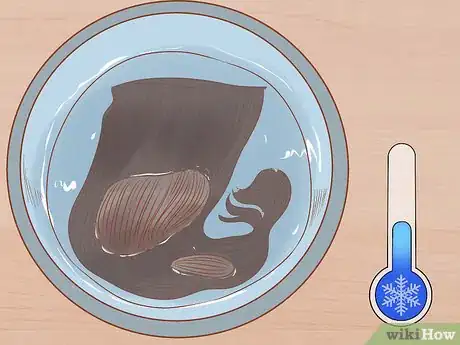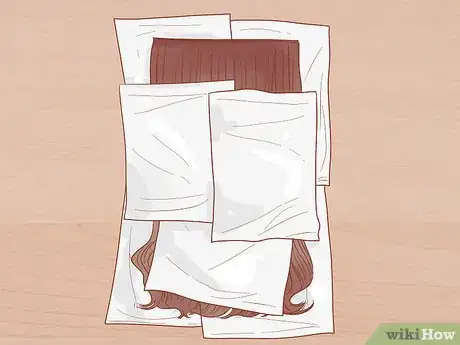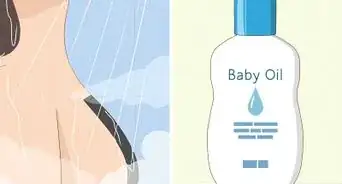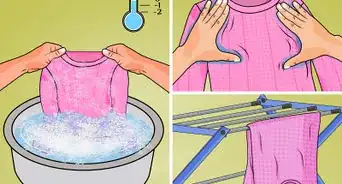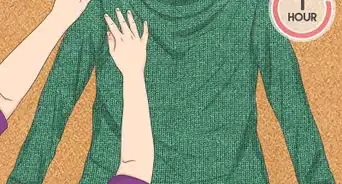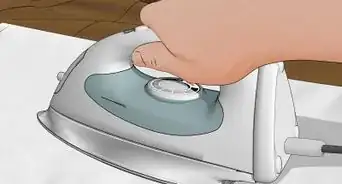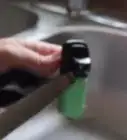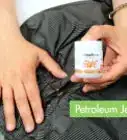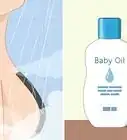This article was co-authored by Tiffany Pate. Tiffany Pate is a Licensed Cosmetologist and the Owner and CEO of Pretty Professional Hair based in Tampa, Florida. With more than 17 years of experience, she specializes in wig, weave, and hair extension installation. Additionally, she provides care that maintains healthy hair.
This article has been viewed 67,905 times.
A quality weave can make every day a good hair day. But, just like regular hair, weaves have to be taken care of, or else you'll end up with a tangled, stringy mess. If yours is already to that point (oops!), you don't necessarily have to completely replace it. You can restore your weave to its original silky smooth strands at home with products you already have. Whether your weave is made of human hair or synthetic hair, you can use apple cider vinegar to fix less severe damage and you can use plain Clorox bleach if your weave needs some extra TLC.
Steps
Rinsing with Apple Cider Vinegar
-
1Detangle your weave with a wide-tooth comb. Gently comb through the hair, starting at the ends and working your way up to the roots at the weft. A wig brush specifically made for extensions and wigs can also help loosen knots.
-
2Soak it for 20 minutes in 4 parts water and 1 part apple cider vinegar. For example, if you use 8 cups (1,900 mL) of water, you'll use 2 cups (470 mL) of apple cider vinegar. Then stir in the apple cider vinegar. The vinegar will work to remove any product or grease that has accumulated on the strands.[1]
- Apple cider vinegar has a lower pH level than your weave, so soaking the weave in vinegar helps restore pH balance and reseal the hair's cuticles.
- Don't worry about the smell! Once you're all done the process, it will be washed out.
- If you're leaving your weave on your head, put the apple cider vinegar and water in a spray bottle. Spray it all over your hair and let it sit for 20 minutes.
Advertisement -
3Rinse your weave with lukewarm water. Hold it from the weft and let the water run through it from top to bottom. Avoid scrubbing the hair, as this can cause it to get tangled.
-
4Lather a clarifying shampoo on your weave, then rinse it. Clarifying shampoos contain more surfactants (cleaning compounds) than regular shampoo, so they can more effectively strip your hair of buildup from hair products and sprays. Work the shampoo from the roots to the ends and rinse under running water.
- You may see clarifying shampoos also called “deep-cleansing” or “purifying.”
- If the water turns brown, that's simply the buildup coming out of the weave, which means the shampoo is working.
-
5Work sulfate-free shampoo through your weave before rinsing it again. Sulfates can strip your hair of its natural oils, drying it out and making it more prone to breakage.[2] Since the clarifying shampoo can be drying on its own, choosing a less harsh shampoo for the second wash of your weave is important.
-
6Apply a deep conditioner to the weave. If you have a weave with waves or curls, look for a moisturizing or detangling conditioner. If your weave is straight, you're better off using a more lightweight conditioner that won't weigh the hair down.[3] Work the conditioner throughout your weave, focusing on the ends which tend to be the driest area.
-
7Place your weave in a resealable bag for 20 to 30 minutes. Seal the bag tightly. This will trap in moisture and allow for maximum conditioning.
- If you're wearing your weave, place a plastic shower cap over your head for the same effect.
- Adding heat with a hair dryer can make the conditioner even more effective.
-
8Rinse your weave with cool water and let it air dry. Run water through the hair until the conditioner is completely removed. If you're in a hurry, you can blow dry the hair, but it's best to avoid using heat when possible. Just like regular hair, heat products can damage a weave, so air drying is the healthiest option.
- If you aren't going to wear the weave immediately, make sure the weave is completely dry before putting it away. Any remaining moisture could lead to mildew.[4]
- Use cool water when you rinse, just like you would with your own hair. Cool water seals the cuticle and locks in moisture.
Giving Your Weave a Bleach Bath
-
1Put on latex gloves to protect your hands from the bleach. Bleach is a super harsh cleaning chemical and can cause painful burns and skin damage if it touches exposed skin. Wearing vinyl or nitrile gloves will also work.
- Because of how dangerous bleach is to your skin, you should never use this method while the weave is still attached to your head. You have to remove it if you want to do a bleach bath.
-
2Mix 16 cups (3,800 mL) of water and 1⁄4 cup (59 mL) of Clorox bleach in a basin. You should only use plain Clorox bleach. Combine the hottest water that you can get from the faucet with the bleach in a basin.[5] Bleach stops the hair cuticles from locking together, preventing tangles.
- Be careful when pouring the bleach into the water so that the chemicals don't splash up onto your skin.
- Using a basin will keep the bleach separate from the ammonia you'll be using later. If ammonia and bleach touch, they can create a potentially fatal gas.
-
3Submerge your weave in the sink for no more than 2 minutes. Swish the hair around to completely saturate the strands, then move quickly to the next step.[6] If you keep your weave in contact with the bleach mixture for longer than 2 minutes, it can greatly damage the hair.
-
4Detangle your weave with a wide-tooth comb while in the bleach mixture. Start from the ends of the weave and gradually work your way up to the wefts to reduce shedding. Don't yank knots with the comb. This can rip the strands off the weft, so instead use your fingers to gently loosen the knot before running the comb through it.
- Remember: You only have 2 minutes to detangle your hair before it needs to be removed from the bleach.
-
5Wash your weave with clarifying shampoo, then rinse it with water. The clarifying shampoo will help get rid of any remaining product or chemicals that are still on the strands. Keep your weave upright (holding it by the weft) while you rinse it so it doesn't get tangled.[7]
-
6Mix 8 cups (1,900 mL) of water and 1⁄4 cup (59 mL) of ammonia in a separate basin. It is crucial that you put the ammonia in a separate basin from the one you used for bleach, because mixing bleach and ammonia can create a highly dangerous chlorine gas! The ammonia acts to neutralize the corrosive bleach chemicals. If your weave is super tangled or ratty, you can double the amount of ammonia to 1⁄2 cup (120 mL).
-
7Dunk your weave in the ammonia mixture for no more than 2 minutes. Dip the hair in and out of the liquid a few times until it's totally saturated. If you notice any knots or tangles forming, feel free to run your wide-tooth comb through the hair again.
-
8Rinse your weave thoroughly with warm water. Keep the base of the weave facing up so that it doesn't flip over while you wash it. If it does, it increases the chances of knotting up.
-
9Pat your weave with a paper towel before letting it air dry. Your weave should now be free of tangles! Remove excess water by firmly pressing a paper towel on the hair. Then lay your weave flat to dry naturally.
- You can also hang your weave on a hanger while it dries.
- If you have a wig head, you can drape your weave over it to dry to the right shape. Attach the weave to the wig head with hair pins to keep it in place.
- After washing, ensure that the toupee remains ventilated. Otherwise, the residual moisture and shampoo can easily corrode the wig.
Warnings
- Working with bleach can cause severe burns if you have an allergic reaction. Never let bleach come into direct contact with your skin.⧼thumbs_response⧽
- If bleach and ammonia mix, they can create a potentially deadly chlorine gas. Always use separate containers for each liquid and dispose of the chemicals down separate drains.⧼thumbs_response⧽
Things You'll Need
Rinsing with Apple Cider Vinegar
- Weave
- Wide-tooth comb
- Sink
- Water
- Apple cider vinegar
- Clarifying shampoo
- Sulfate-free shampoo
- Deep conditioner
- Resealable bag
Giving Your Weave a Bleach Bath
- Weave
- Wide-tooth comb
- Latex gloves
- 2 basins
- Plain Clorox bleach
- Hot water
- Bleach
- Ammonia
- Clarifying shampoo
References
- ↑ https://youtu.be/qfnZ1GkjpQY?t=25s
- ↑ https://www.self.com/story/sulfate-free-shampoo
- ↑ https://www.ebony.com/weaveology-101-the-best-tips-for-maintaining-healthy-extensions/
- ↑ https://www.cosmopolitan.com/style-beauty/beauty/a45458/weave-fails-and-how-to-avoid-them/
- ↑ https://baucemag.com/no-more-bad-hair-days-how-to-restore-a-tangled-weave/
- ↑ https://baucemag.com/no-more-bad-hair-days-how-to-restore-a-tangled-weave/
- ↑ https://baucemag.com/no-more-bad-hair-days-how-to-restore-a-tangled-weave/
